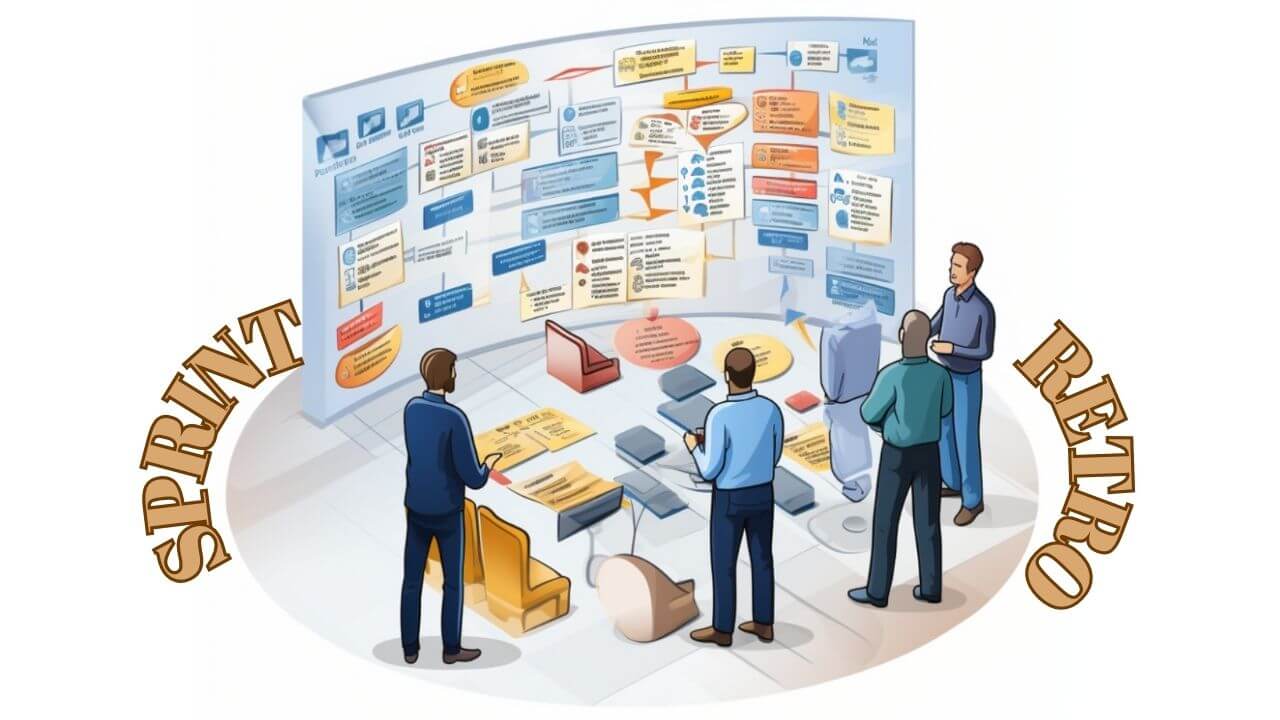The Sprint Retrospective Meeting in Scrum: A Comprehensive Guide
Hello there, fellow Scrum enthusiasts!
Today, we’re going to delve into one of the most crucial aspects of the Scrum framework: The Sprint Retrospective Meeting.
As a seasoned Scrum Master, I’ve seen firsthand how this meeting can transform a team’s workflow and productivity.
This post is a multimedia presentation, and it’s crucial to both read and watch to fully grasp the complete understanding of this meeting.
If you are OK with this, let’s get started!
What is a Sprint Retrospective Meeting?
The Sprint Retrospective is like a team meeting where we talk about what we did in a game, what was fun, what wasn’t, and how we can play better next time.
Before we dive deeper into the Sprint Retrospective Meeting, I highly recommend watching this video on [What is Sprint Retrospective Meeting?]. It provides a great overview and will set the stage for our discussion.
In essence, the Sprint Retrospective is a meeting held at the end of each sprint where the Scrum Team reflects on the past sprint.
They identify what went well, what didn’t, and most importantly, how they can improve in the next sprint.
It’s all about continuous improvement and learning from our experiences.
The Benefits of Retrospective Meetings in Scrum
Now that we understand what a Sprint Retrospective is, let’s talk about why it’s so important.
Retrospective meetings help teams become better by giving them a chance to talk about what they did. It’s like when you practice a game, and after, you talk about what you did well and what you can do even better next time.
So, these meetings make the team stronger and smarter!
For that, I encourage you to watch this video on [the benefits of retrospective meetings in Scrum].
The retrospective meeting is not just a time to reflect; it’s a time to act. It’s where we identify actionable improvements that can be implemented in the next sprint.
This continuous cycle of reflection and improvement is what makes Scrum such a powerful framework for managing complex projects.
Running a Sprint Retrospective
So how do you run an effective Sprint Retrospective?
This video on [Running Sprint Retrospective] provides some excellent insights.
The key to a successful retrospective is creating an open and safe environment where every team member feels comfortable sharing their thoughts and ideas.
As a Scrum Master, it’s my job to facilitate this discussion and ensure everyone’s voice is heard.
Prioritizing Improvements
With so many potential improvements identified in each retrospective, how do we decide which ones to implement?
This video on [5 Tips for Prioritizing Improvements in Sprint Retro] offers some practical advice.
Remember, the goal is not to fix everything at once but to continuously improve over time. Prioritize improvements that align with your team’s goals and have the most significant impact on your workflow.
Difference Between Sprint Review and Sprint Retrospective
Sprint Review focuses on the product, while Sprint Retrospective focuses on the process. Sprint Review is concerned primarily with optimizing and maximizing product value, whereas Sprint Retrospective is involved with people, processes, and tools.
In the video below, you’ll find detailed explanations about the differences between the Sprint Review and Sprint Retrospective.
Wrapping Up
As we wrap up this post, I want to share something personal with you. Being a Scrum Master has its challenges.
There are days when things don’t go as planned, when conflicts arise within the team, or when a sprint goal isn’t met. But amidst these challenges lies the beauty of Scrum: the opportunity for continuous improvement.
Every retrospective meeting is a chance to learn and grow, both as individuals and as a team. It’s where we face our problems head-on and come up with solutions together. And that, my friends, is the power of Scrum.
So keep retrospecting, keep improving, and remember: The path to greatness is paved with many retrospectives! Check my other blog posts here.
You can always start learning Scrum for free with me.
Until next time,
Dejan Majkic
RELATED ARTICLE: What is Sprint Retrospective and Why you should use it?
